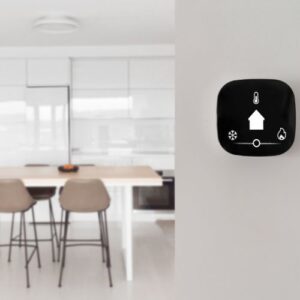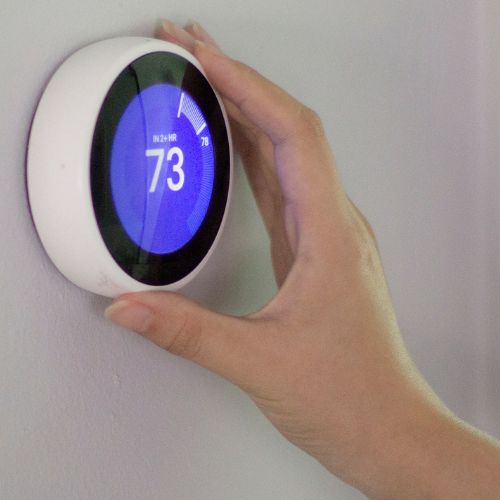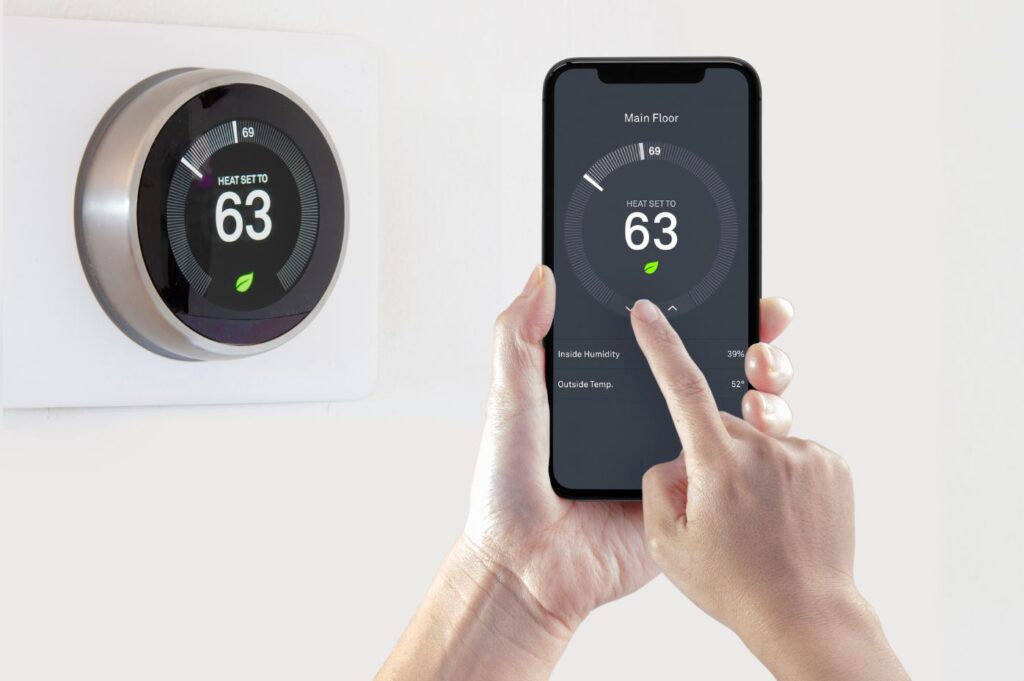
Installing a smart thermostat can seem like a daunting task, but with a little understanding of the installation process, it becomes much more manageable. The first step is to choose the right location for your thermostat. It should be in a central area of your home that is easily accessible, such as the hallway or living room. Next, you’ll need to turn off the power to your heating and cooling system before proceeding. This ensures your safety during the installation process. Once the power is off, you can remove your old thermostat and disconnect the wires. It’s important to take note of which wire corresponds to each terminal, as this will be crucial when connecting your new smart thermostat.
After the old thermostat is removed, you can mount the base plate of your smart thermostat onto the wall using the provided screws. Make sure it is level and secure before proceeding. Then, reconnect the wires to their corresponding terminals on the base plate. Most smart thermostats will have clear labels to help you with this step.
Finally, attach the faceplate of your smart thermostat to the base plate and turn on the power to your heating and cooling system. Follow the manufacturer’s instructions to complete the setup process, which usually involves connecting the thermostat to your home’s Wi-Fi network and programming your desired temperature settings. Once everything is set up, you can start enjoying the convenience and energy savings that a smart thermostat offers. Keep in mind that these are general instructions, and it’s always a good idea to consult the installation manual provided by the manufacturer for specific details. If you’re not comfortable with DIY installations, it’s recommended to hire a professional HVAC technician to ensure a proper and safe installation, and HVAC in LA is the best professional team to call for assistance.
Common Challenges During Smart Thermostat Installation
Installing a smart thermostat can bring a lot of benefits, but it’s not without its challenges. One common challenge during smart thermostat installation is compatibility issues. Not all HVAC systems are compatible with every smart thermostat on the market, so it’s important to do your research and make sure that the thermostat you choose will work with your specific system. This may require checking the type of wiring you have, the voltage requirements, and any additional features you may need to consider.
Another challenge is the installation process itself. While some homeowners may feel comfortable installing a smart thermostat on their own, others may prefer to hire a professional HVAC technician to ensure it is done correctly. The installation process can involve turning off the power to the HVAC system, removing the old thermostat, and connecting the wires to the new smart thermostat. It’s important to follow the manufacturer’s instructions carefully and make sure all connections are secure to avoid any issues with functionality down the line.
Navigating these challenges during smart thermostat installation can be a bit daunting, but with the right preparation and knowledge, it can be a smooth process. By ensuring compatibility and considering professional help if needed, you’ll be well on your way to enjoying the energy-efficient benefits of a smart thermostat in your home. So, don’t let these challenges deter you from upgrading your thermostat and embracing the future of home comfort control.

Maximizing Energy Efficiency with a Smart Thermostat
One of the key benefits of installing a smart thermostat is the potential for maximizing energy efficiency. By intelligently controlling the temperature in your home, a smart thermostat can help you save on your energy bills while reducing your carbon footprint. Luckily, a smart thermostat allows you to easily program and schedule temperature settings according to your daily routine.
With this device, you can set different temperatures for different times of the day, ensuring that your home is heated or cooled only when you need it. For example, you can set the thermostat to lower the temperature while you’re away at work and then have it warm up the house before you return. This not only reduces energy waste but also ensures that you have a comfortable living environment when you’re at home. In addition to advanced scheduling capabilities, smart thermostats also offer features such as occupancy detection and learning algorithms. These features allow the thermostat to adapt to your preferences and automatically adjust the temperature based on your behavior patterns.
Over time, the thermostat learns your heating and cooling preferences and optimizes its settings to maximize energy efficiency without sacrificing comfort. This adaptive technology is a game-changer when it comes to saving energy and reducing your utility bills. Remember to install a smart thermostat in a central location of your home for accurate temperature readings and efficient control. Consider programming your thermostat to lower temperatures in the winter and raise them in the summer to further enhance energy efficiency. With a smart thermostat, you can take significant steps towards reducing your energy consumption and contributing to a more sustainable future.

Contact HVAC In LA Today
Frequent Asked Questions
Before installing a smart thermostat, consider factors such as compatibility with your HVAC system, your home’s internet connectivity, and your budget for the installation.
The installation process of smart thermostats typically involves turning off the power, removing the old thermostat, connecting the wires to the new thermostat, and configuring the settings using the accompanying app.
Common challenges during smart thermostat installation include compatibility issues with older HVAC systems, difficulties in wiring the new thermostat correctly, and troubleshooting connectivity problems.
To maximize energy efficiency with a smart thermostat, take advantage of features like programmable schedules, geofencing, and remote access. Regularly monitoring and adjusting the temperature settings based on your usage patterns can also help save energy.
If you experience issues with your smart thermostat, try checking the batteries, ensuring the thermostat is connected to the internet, and restarting the device. If these steps don’t solve the problem, contacting customer support or a professional technician may be necessary.



